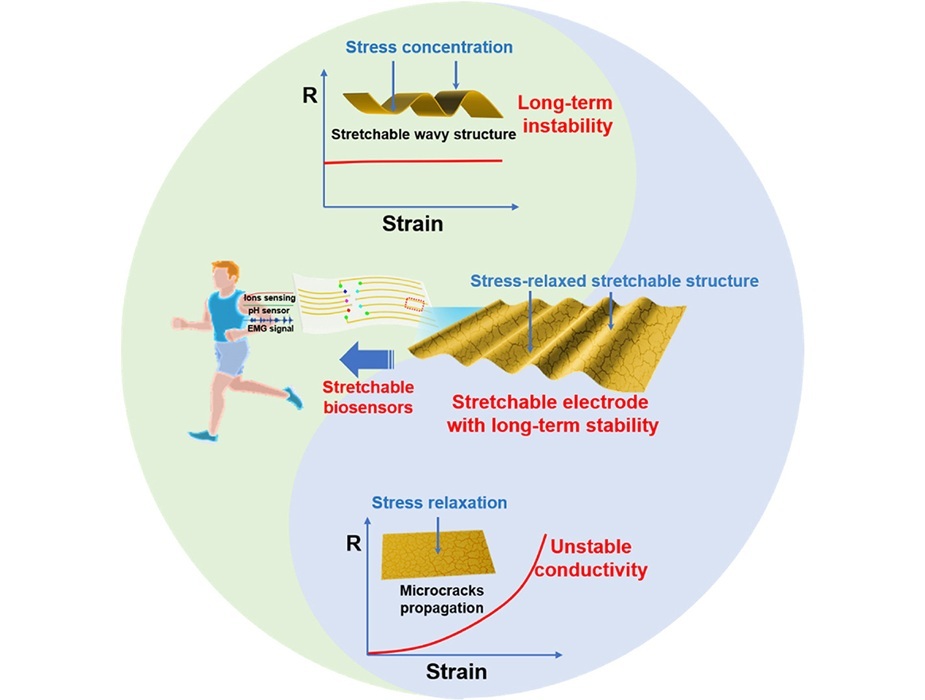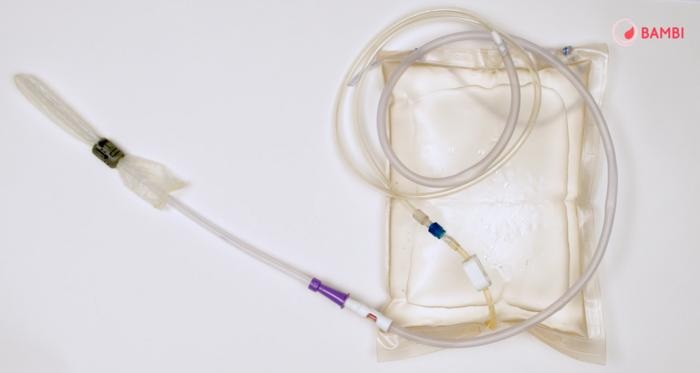Activated Gold Particles Help Ablate Prostate Tumors
|
By HospiMedica International staff writers Posted on 09 Sep 2019 |
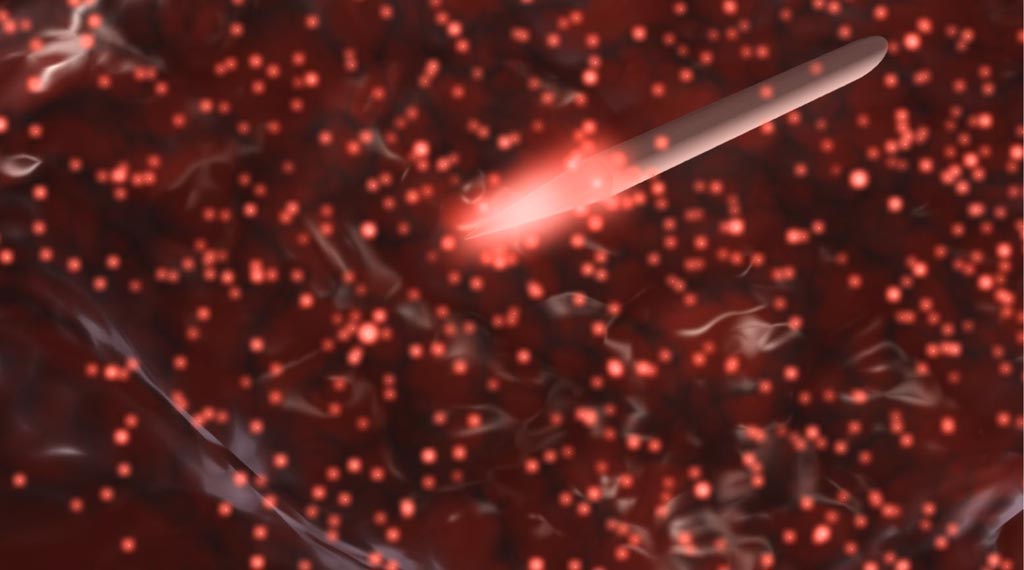
Image: GSNs scintillating under NIR laser light (Photo courtesy of Nanospectra Biosciences).
Gold-silica nanoshell (GSN) particles that absorb near-infrared light (NIR) can induce photothermal ablation of prostate cancer, claims a new study.
Researchers at Nanospectra Biosciences (Nanospectra; Houston, TX, USA), the Icahn School of Medicine at Mount Sinai (New York, NY, USA), Rice University (Rice, Houston, TX, USA), and other institutions conducted a clinical trial to examine the use of ultrafocal photothermal ablation for cancerous tumors. For the study, they used the Nanospectra AuroLase Therapy system, a focal ablation modality that relies on laser excitation of GSN to selectively target and treat focal lesions.
The GSN particles were designed to absorb NIR at wavelengths of high tissue transparency, providing highly localized treatment of prostate cancer with substantially reduced risks of deleterious treatment-related side effects. The study included 16 men (58-79 years of age) diagnosed with low or intermediate risk localized prostate cancer. All were given intravenous (IV) GSN nanoparticles, underwent treatment, and had a multiparametric MRI of the prostate at 48-72 hours. Targeted fusion biopsies were taken at 3 and 12 months, and finally a 12 core systematic biopsy was done one year after therapy.
The results revealed that GSN-mediated focal laser ablation was successful in 87.5% of lesions treated at one year of follow-up. The treatment protocol was found to be safe and feasible, and did not affect the genitourinary system of the patients. In addition, the patients’ quality of life (QOL) was preserved by reducing unwanted side effects, including erectile dysfunction and/or urine leakage, and there were no serious complications. The study was published on August 26, 2019, in Proceedings of National Academy of Science (PNAS).
Intravenously delivered GSNs preferentially accumulate within solid tumor tissue due to vessel wall fenestrations associated with aberrant tumor neovasculature and inherently defective lymphatic drainage within these lesions. On illumination with a NIR laser at subablative power, healthy tissue with lower concentrations of GSN suffers mild and reversible hyperthermia, while the higher concentrations of GSN within the cancerous lesion generate sufficient photothermal energy to produce coagulative necrosis.
Related Links:
Nanospectra Biosciences
Icahn School of Medicine at Mount Sinai
Rice University
Researchers at Nanospectra Biosciences (Nanospectra; Houston, TX, USA), the Icahn School of Medicine at Mount Sinai (New York, NY, USA), Rice University (Rice, Houston, TX, USA), and other institutions conducted a clinical trial to examine the use of ultrafocal photothermal ablation for cancerous tumors. For the study, they used the Nanospectra AuroLase Therapy system, a focal ablation modality that relies on laser excitation of GSN to selectively target and treat focal lesions.
The GSN particles were designed to absorb NIR at wavelengths of high tissue transparency, providing highly localized treatment of prostate cancer with substantially reduced risks of deleterious treatment-related side effects. The study included 16 men (58-79 years of age) diagnosed with low or intermediate risk localized prostate cancer. All were given intravenous (IV) GSN nanoparticles, underwent treatment, and had a multiparametric MRI of the prostate at 48-72 hours. Targeted fusion biopsies were taken at 3 and 12 months, and finally a 12 core systematic biopsy was done one year after therapy.
The results revealed that GSN-mediated focal laser ablation was successful in 87.5% of lesions treated at one year of follow-up. The treatment protocol was found to be safe and feasible, and did not affect the genitourinary system of the patients. In addition, the patients’ quality of life (QOL) was preserved by reducing unwanted side effects, including erectile dysfunction and/or urine leakage, and there were no serious complications. The study was published on August 26, 2019, in Proceedings of National Academy of Science (PNAS).
Intravenously delivered GSNs preferentially accumulate within solid tumor tissue due to vessel wall fenestrations associated with aberrant tumor neovasculature and inherently defective lymphatic drainage within these lesions. On illumination with a NIR laser at subablative power, healthy tissue with lower concentrations of GSN suffers mild and reversible hyperthermia, while the higher concentrations of GSN within the cancerous lesion generate sufficient photothermal energy to produce coagulative necrosis.
Related Links:
Nanospectra Biosciences
Icahn School of Medicine at Mount Sinai
Rice University
Latest Surgical Techniques News
- 3D Printable Bio-Active Glass Could Serve as Bone Replacement Material
- Spider-Inspired Magnetic Soft Robots to Perform Minimally Invasive GI Tract Procedures
- Micro Imaging Device Paired with Endoscope Spots Cancers at Earlier Stage
- AI Spine Model Could Reduce Surgical Risks
- Novel Method Uses Interstitial Fluid Flow to Predict Where Brain Tumor Can Grow Next
- World’s First Custom Anterior Cervical Spine Surgery Performed Using Personalized Implant
- Implantable Biodegradable Scaffold Helps Broken Bones Regrow Quickly
- First Human Spinal Cord Repair Using Patient Own Cells Could Cure Paralysis
- 'Dual-Mode' Tracer Enables Surgeons to See and Hear Prostate Cancer
- Pioneering One-Stage Hybrid Surgery Ensures Safer Outcomes in Brain and Spine Tumors
- Reimplanting Lab-Grown Patient Cartilage Accelerates Healing After Hip Surgery
- Diamond-Based Sensor Pinpoints Metastasized Cancer for Surgical Removal
- Minimally Invasive Valve Repair Improves Survival in Elderly AFMR Patients
- Tiny Soft Robots Dissolve Painful Kidney Stones with Targeted Drug Delivery
- Implantable 3D Patch Closes and Repairs Heart Defects
- New Endoscopy Technology Enables Early Detection of Esophageal Cancer
Channels
Critical Care
view channel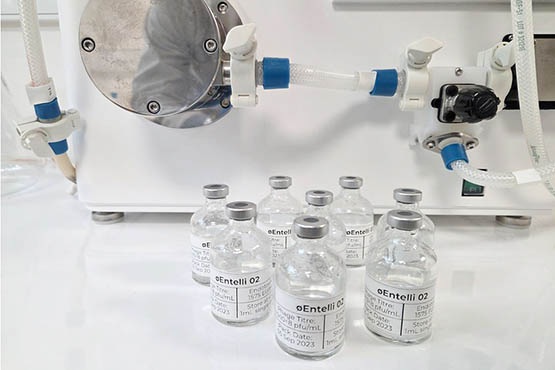
Virus Cocktail to Combat Superbugs Offers New Precision Medicine Approach for Hospitals Battling AMR
Antimicrobial resistance is one of the most pressing challenges in modern medicine, making once-treatable infections increasingly lethal. Enterobacter infections, for example, are difficult to treat and... Read more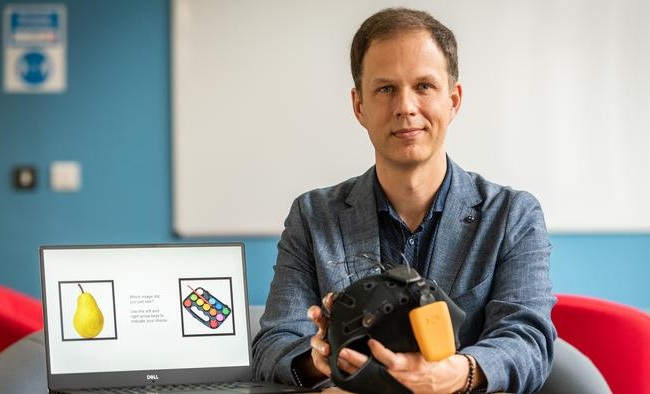
Brainwave Test Detects Memory Decline Years Before Alzheimer’s Diagnosis
Alzheimer’s disease develops silently for years before symptoms appear, making early detection a major challenge. Conventional diagnostic tools often miss the first decade or more of brain changes, delaying... Read morePatient Care
view channel
Revolutionary Automatic IV-Line Flushing Device to Enhance Infusion Care
More than 80% of in-hospital patients receive intravenous (IV) therapy. Every dose of IV medicine delivered in a small volume (<250 mL) infusion bag should be followed by subsequent flushing to ensure... Read more
VR Training Tool Combats Contamination of Portable Medical Equipment
Healthcare-associated infections (HAIs) impact one in every 31 patients, cause nearly 100,000 deaths each year, and cost USD 28.4 billion in direct medical expenses. Notably, up to 75% of these infections... Read more
Portable Biosensor Platform to Reduce Hospital-Acquired Infections
Approximately 4 million patients in the European Union acquire healthcare-associated infections (HAIs) or nosocomial infections each year, with around 37,000 deaths directly resulting from these infections,... Read moreFirst-Of-Its-Kind Portable Germicidal Light Technology Disinfects High-Touch Clinical Surfaces in Seconds
Reducing healthcare-acquired infections (HAIs) remains a pressing issue within global healthcare systems. In the United States alone, 1.7 million patients contract HAIs annually, leading to approximately... Read moreHealth IT
view channel
Printable Molecule-Selective Nanoparticles Enable Mass Production of Wearable Biosensors
The future of medicine is likely to focus on the personalization of healthcare—understanding exactly what an individual requires and delivering the appropriate combination of nutrients, metabolites, and... Read moreBusiness
view channel
Philips and Masimo Partner to Advance Patient Monitoring Measurement Technologies
Royal Philips (Amsterdam, Netherlands) and Masimo (Irvine, California, USA) have renewed their multi-year strategic collaboration, combining Philips’ expertise in patient monitoring with Masimo’s noninvasive... Read more
B. Braun Acquires Digital Microsurgery Company True Digital Surgery
The high-end microsurgery market in neurosurgery, spine, and ENT is undergoing a significant transformation. Traditional analog microscopes are giving way to digital exoscopes, which provide improved visualization,... Read more
CMEF 2025 to Promote Holistic and High-Quality Development of Medical and Health Industry
The 92nd China International Medical Equipment Fair (CMEF 2025) Autumn Exhibition is scheduled to be held from September 26 to 29 at the China Import and Export Fair Complex (Canton Fair Complex) in Guangzhou.... Read more











